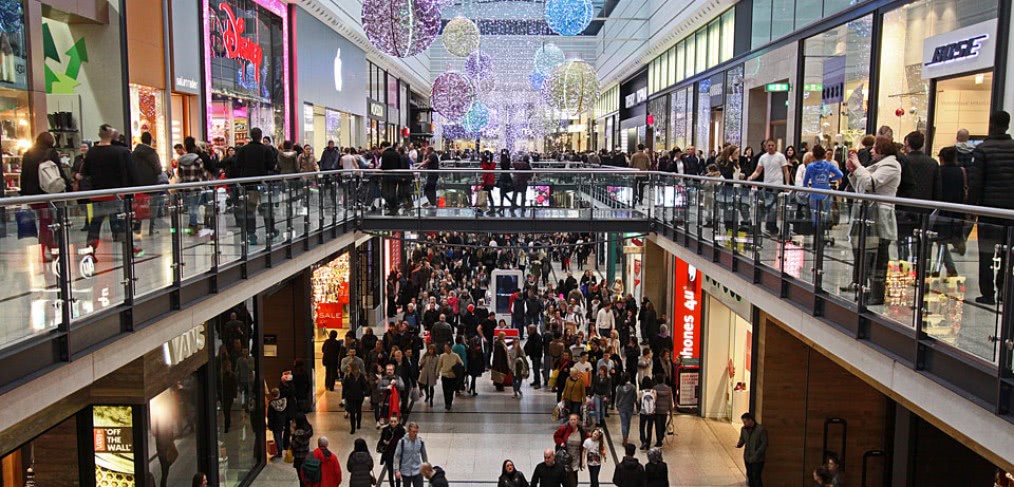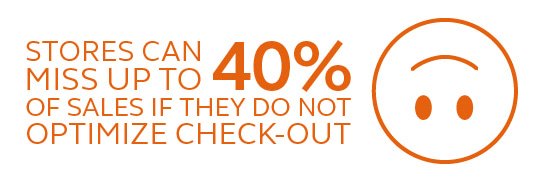
Five Store Trends to Watch this Holiday Season
It’s the most wonderful time of the year, or the most hectic, depending on who you ask. As more people opt to do their Black Friday shopping in their pajamas, iPhone in hand and leftover pumpkin pie in the other, this season more than any other highlights the ubiquitous plight of retailers to maintain their brick and mortar draw. The good news is that most Americans plan to spend more this year—up to 15.3% over 2014—and the fact remains that most purchases will still be made in the physical rather than the cyber realm.
As retail brands continue to compete for consumer engagement, we take note of a few key trends that will impact this year’s hustle and bustle.
CATERING TO THE SAVVY SHOPPER
“Consumers are more savvy and sophisticated than ever before. The recession had a tremendous impact on how consumers shop…they have a few more dollars in their wallets, but that doesn’t mean they aren’t going to be smart about how and when they spend.”
—Matthew Shay, President and CEO of the National Retail Federation
Knowledge is power, and when it comes to the path-to-purchase, it’s become easier for shoppers to be informed every step of the way and find answers to their questions. While it would be nice to think that an army of 700,000 to 750,000 seasonal employees can help with that, technology has an undeniable impact. Shoppers are increasingly using smartphones for research before heading into the store, and 82% will consult their phone while in the store. Meanwhile, apps like Red Laser are the twenty-first century’s answer to Kris Kringle in Miracle on 34th Street, allowing consumers to compare products and prices found in-store across platforms. As a result, more brands are using their physical spaces as showrooms, or the inventory-less store, where customers go beyond browsing to interact with products and retailers increase merchandising appeal. In the store as showroom, digital technology is the new customer service representative and digital displays showcase virtual products.
A SMALLER STAMPEDE
Related to the notion that omnichannel retail is shifting the volume and direction of foot traffic, the National Retail Federation’s 2015 holiday forecast indicates that shoppers are getting a head start on their lists rather than waiting to take advantage of Black Friday promotions and discounts. Additionally, the store isn’t the only place where those doorbuster deals can be found (even WalMart will make roughly 96% of its Black Friday deals available online this year). The most successful brands are those that go beyond passive adaptation and actively take the reins in the omnichannel world, and their spaces are changing accordingly. Smaller store footprints, larger storage areas to house online orders for pick up, and more flexible overall designs allow brands to leverage their resources in a way that behooves their customers—and their bottom line—the most.
THE AMAZING RACE TO CHECK-OUT
We’ve all been there: standing in a slow-moving check-out line, debating about whether the joy that new sweater or pair of shoes will bring us will prove fleeting and result in buyer’s remorse. Given too much time to think about it, or confronted with difficulties in the payment process, we might just walk away. According to Ralph Dangelmaier, CEO of BlueSnap, “Merchants can miss 20-40% of their sales because they aren’t optimized to convert shoppers into happy buyers.” Designing a frictionless store can seriously impact a retailer’s bottom line, and again, technology often plays a role. Look no further than two of the world’s most dominant brands: Apple and Starbucks. Apple employed mobile point-of-sale devices and a considerable number of retailers—including Nordstrom—followed suit, freeing their associates from the cash register and meeting customers where they are with iPad in hand. Starbucks flipped this concept on its head: 21% of all transactions now take place with the help of skip-the-line technology that puts the purchase process back in the hands of the consumer.
IT’S ABOUT TIME…
Time is a form of currency, and expediting the purchase process is one way to save it. But today’s consumers are not only looking to spend time efficiently, but memorably. Retailers should be only too happy to oblige, as tactics that promote the experiential improve dwell time and increase the likelihood of a purchase. In response, stores are being transformed into multi-purpose spaces that function as cafes, offer on-site product demonstrations and customization, or provide community space for workshops and events—and some, like the TOMS flagship on Abbot Kinney, do all of the above. Meanwhile, the pop-up shop, which thrives on novelty, flexibility, and use of inexpensive, temporary space to test out new markets, products, and consumers, continues to evolve. Splacer, an online platform offering well-designed spaces for rent, is the perfect place to find a venue for a trunk show, product launch or VIP sale, and concepts like Thread at Union Market allow emerging and established brands to test new retail waters. As retailers engage consumers’ minds as well as their wallets, they’re also increasingly concerned with catering to their stomachs; unique in-store food and beverage offerings continue to expand, and some struggling retailers attempt to find salvation in a slice of pizza.
…AND HAVING A CONSCIENCE
When the Black Friday, Small Business Saturday and Cyber Monday dust has settled, another day will dawn: Giving Tuesday. Described as a “global day dedicated to giving back,” it is the antithesis of our commercialized culture, a remedy for our rampant consumerism, and a way to atone for our retail sins. Successful retailers have tapped into this by realizing the power of a socially conscious business strategy, from the peddling of secondhand wares by companies like ThredUp and Eileen Fisher to the buy-one-give-one model made famous by TOMS and adopted by Warby Parker and Kno Clothing. Integrated with an effective social media campaign, positive endorsements result in social currency that can be just as valuable as financial currency. The conversation can (and should) be continued in the physical store—whether that be through branded reusable tote bags or charity-themed merchandise. And during this season for giving, you can bet that retailers will leverage all available channels and issue potent reminders about their philanthropic endeavors to win the little money you have left in early December.
Cover image via Flickr: Wilamoyo



